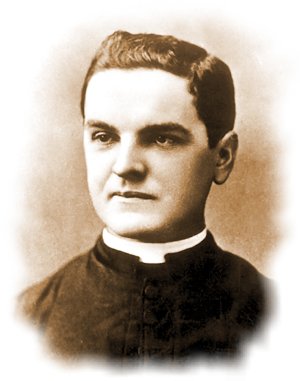Browse "Things"
-
Article
Kinglet
The kinglet is a tiny, highly active, insectivorous songbird, olive grey with brightly coloured crown, sharp, slender bill and short, stubby tail.
"https://development.thecanadianencyclopedia.ca/images/tce_placeholder.jpg?v=e9dca980c9bdb3aa11e832e7ea94f5d9" // resources/views/front/categories/view.blade.php
https://development.thecanadianencyclopedia.ca/images/tce_placeholder.jpg?v=e9dca980c9bdb3aa11e832e7ea94f5d9
-
Article
Kings Landing Historical Settlement
Kings Landing Historical Settlement is located 37 km west of Fredericton, NB. It was created in the late 1960s when the Mactaquac Dam threatened to flood many historic buildings in the Saint John River valley. Over 70 restored and reconstructed buildings and other structures are now located at Kings Landing to represent a New Brunswick settlement of the 19th and 20th centuries.
"https://d2ttikhf7xbzbs.cloudfront.net/media/media/dd14f8bd-899c-42d0-9d51-f5227c85a285.jpg" // resources/views/front/categories/view.blade.php
https://d2ttikhf7xbzbs.cloudfront.net/media/media/dd14f8bd-899c-42d0-9d51-f5227c85a285.jpg
-
Article
King's Posts
King's Posts, a name applied during the French regime to fur trade and fishing posts in the King's Domain.
"https://development.thecanadianencyclopedia.ca/images/tce_placeholder.jpg?v=e9dca980c9bdb3aa11e832e7ea94f5d9" // resources/views/front/categories/view.blade.php
https://development.thecanadianencyclopedia.ca/images/tce_placeholder.jpg?v=e9dca980c9bdb3aa11e832e7ea94f5d9
-
Article
King's Presents
The practice of offering regular gifts to Indigenous trading partners and allies, begun by Governor Montmagny in 1648, was, by the end of the 17th century institutionalized as the "Présents du Roy" at the annual meeting with the governor-general of New France at Montréal.
"https://development.thecanadianencyclopedia.ca/images/tce_placeholder.jpg?v=e9dca980c9bdb3aa11e832e7ea94f5d9" // resources/views/front/categories/view.blade.php
https://development.thecanadianencyclopedia.ca/images/tce_placeholder.jpg?v=e9dca980c9bdb3aa11e832e7ea94f5d9
-
Article
Kinmel Park Riot
The Kinmel Park Riot (4–5 March 1919) was one of several demobilization riots at the end of the First World War. Five Canadian soldiers died during the riot, which happened at the Canadian Army camp at Kinmel Park near Rhyl in North Wales. It was the most serious of 13 riots or disturbances involving Canadian troops in the United Kingdom between November 1918 and June 1919.
"https://d2ttikhf7xbzbs.cloudfront.net/KinmelParkRiot/KinmelRiots.jpg" // resources/views/front/categories/view.blade.php
https://d2ttikhf7xbzbs.cloudfront.net/KinmelParkRiot/KinmelRiots.jpg
-
Macleans
Kirkland Lake Eyes Hazardous Waste Plant
BILL ENOUY IS PROUD of his town. Oh, the jolly looking mayor of KIRKLAND LAKE, Ont., knows the main street needs a facelift, and that something should be done about the shortage of family physicians.This article was originally published in Maclean's Magazine on November 18, 2002
"https://development.thecanadianencyclopedia.ca/images/tce_placeholder.jpg?v=e9dca980c9bdb3aa11e832e7ea94f5d9" // resources/views/front/categories/view.blade.php
https://development.thecanadianencyclopedia.ca/images/tce_placeholder.jpg?v=e9dca980c9bdb3aa11e832e7ea94f5d9
-
Article
Klee Wyck
Klee Wyck (1941) is a memoir by Emily Carr, consisting of a collection of literary sketches. It is an evocative work that describes in vivid detail the influence that the Indigenous people and culture of the Northwest Coast had on Carr. Klee Wyck (“Laughing One”) is the name the Nuu-chah-nulth (Nootka) people gave her. The book won a Governor General’s Literary Award for nonfiction in 1941 and has been translated into French.
"https://d2ttikhf7xbzbs.cloudfront.net/media/media/a470b336-21e0-40c4-a8a8-4118d56bb838.jpg" // resources/views/front/categories/view.blade.php
https://d2ttikhf7xbzbs.cloudfront.net/media/media/a470b336-21e0-40c4-a8a8-4118d56bb838.jpg
-
Macleans
Klein's Controversial Health-Care Reform
This article was originally published in Maclean’s magazine on April 3, 2000. Partner content is not updated. Sitting in his wood-panelled office at the Alberta legislature, Ralph Klein contemplates the political fire storm raging outside his door.
"https://development.thecanadianencyclopedia.ca/images/tce_placeholder.jpg?v=e9dca980c9bdb3aa11e832e7ea94f5d9" // resources/views/front/categories/view.blade.php
https://development.thecanadianencyclopedia.ca/images/tce_placeholder.jpg?v=e9dca980c9bdb3aa11e832e7ea94f5d9
-
Article
Klondike Gold Rush
The discovery of gold in the Yukon in 1896 led to a stampede to the Klondike region between 1897 and 1899. This led to the establishment of Dawson City (1896) and subsequently, the Yukon Territory (1898).
"https://d2ttikhf7xbzbs.cloudfront.net/media/media/f8badbbb-95b8-44cf-a053-5589845ee1ef.jpg" // resources/views/front/categories/view.blade.php
https://d2ttikhf7xbzbs.cloudfront.net/media/media/f8badbbb-95b8-44cf-a053-5589845ee1ef.jpg
-
Editorial
Discovering Gold in the Klondike
The following article is an editorial written by The Canadian Encyclopedia staff. Editorials are not usually updated.
"https://d2ttikhf7xbzbs.cloudfront.net/media/media/d50c2c97-6f10-450d-a282-84e29ec3cf0f.jpg" // resources/views/front/categories/view.blade.php
https://d2ttikhf7xbzbs.cloudfront.net/media/media/d50c2c97-6f10-450d-a282-84e29ec3cf0f.jpg
-
Editorial
Klondikers Challenge for the Stanley Cup
The following article is an editorial written by The Canadian Encyclopedia staff. Editorials are not usually updated. With our national game now a multi-billion-dollar professional sport, it is perhaps comforting to look back to simpler times when hockey was closer to community, and was played for love and glory by amateurs. In the early days of Stanley Cup competition, any Canadian team with some success at the senior level could challenge the current champs. In 1905 one of the strangest challenges came from Dawson City, Yukon.
"https://d2ttikhf7xbzbs.cloudfront.net/media/media/8075ba2d-1fa1-47e3-bedc-30e2da0d6139.jpg" // resources/views/front/categories/view.blade.php
https://d2ttikhf7xbzbs.cloudfront.net/media/media/8075ba2d-1fa1-47e3-bedc-30e2da0d6139.jpg
-
Article
Knights of Columbus in Canada
Founded in the United States in 1882 and arriving in Canada in 1897, the Knights of Columbus are a lay Catholic fraternal service organization committed to charity, unity, fraternity and patriotism. They are devoted to mutual aid through an internal insurance system, to the promotion of the Catholic Church, and to social welfare through community voluntarism and charitable public works.
"https://d2ttikhf7xbzbs.cloudfront.net/media/media/fc50131c-a5a3-4650-94ad-e33e5b9a5de5.jpg" // resources/views/front/categories/view.blade.php
https://d2ttikhf7xbzbs.cloudfront.net/media/media/fc50131c-a5a3-4650-94ad-e33e5b9a5de5.jpg
-
Article
Knights of Labor in Canada
The Knights of Labor, the leading labour reform organization in the late 19th century, played a key role in the development of the working-class consciousness in Canada. It was also an important player in the development of the Trades and Labor Congress of Canada and interceded with authorities to improve living standards for the working class. The movement fell victim to internal conflict and the successes of other unions, and began fading out at the end of the 1890s.
"https://d2ttikhf7xbzbs.cloudfront.net/media/media/3e5cc2c6-a047-4fa0-8747-bca4459849dd.jpg" // resources/views/front/categories/view.blade.php
https://d2ttikhf7xbzbs.cloudfront.net/media/media/3e5cc2c6-a047-4fa0-8747-bca4459849dd.jpg
-
Macleans
Kobe Earthquake
Bridges, train trestles and elevated highways collapsed, sending hapless passengers plummeting to their deaths. Apartment buildings crumpled and fell, crushing terrified occupants still huddled in their beds.This article was originally published in Maclean's Magazine on January 30, 1995
"https://development.thecanadianencyclopedia.ca/images/tce_placeholder.jpg?v=e9dca980c9bdb3aa11e832e7ea94f5d9" // resources/views/front/categories/view.blade.php
https://development.thecanadianencyclopedia.ca/images/tce_placeholder.jpg?v=e9dca980c9bdb3aa11e832e7ea94f5d9
-
Article
Kohlrabi
Kohlrabi (Brassica oleracea, Gongylodes Group), sometimes called stem turnip or cabbage turnip, an important Canadian garden vegetable of the Cruciferae family.
"https://d2ttikhf7xbzbs.cloudfront.net/media/media/ef29012b-714b-4166-b09e-7a34416efcd3.jpg" // resources/views/front/categories/view.blade.php
https://d2ttikhf7xbzbs.cloudfront.net/media/media/ef29012b-714b-4166-b09e-7a34416efcd3.jpg
